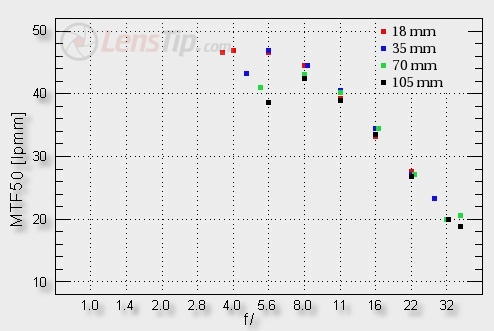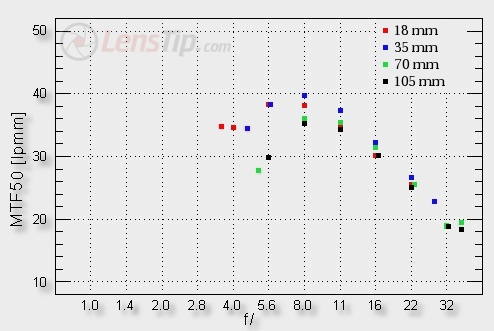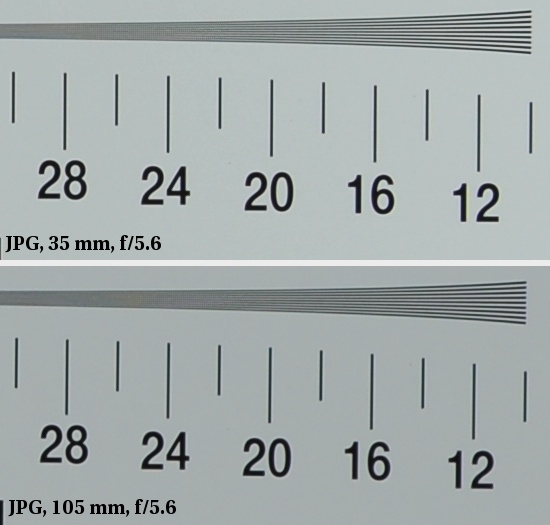Nikon Nikkor AF-S DX 18-105 mm f/3.5-5.6 VR ED
4. Image resolution

One look at the graph is enough to make you cheer and clap. Even at shortest focal lengths and wide open the lens can reach the 47 lpmm level so, taking into account the error margin, the same level as good (if not a bit elderly) Nikkor primes. It is really a remarkable level.
Please Support UsIf you enjoy our reviews and articles, and you want us to continue our work please, support our website by donating through PayPal. The funds are going to be used for paying our editorial team, renting servers, and equipping our testing studio; only that way we will be able to continue providing you interesting content for free. |
- - - - - - - - - - - - - - - - - - - - - - - - - - - - - - - - - - - - - - - - - - - - - - - -
At 70-105 mm the results are a bit worse but still very good or even brilliant. Here we can’t talk about a remarkable level, though, because the maximum relative aperture with significant aberration level is still by f/5.3-5.6. Restricting aberrations needs stopping down by 1-2 EV so going to the level of f/8-11, where the diffraction starts having a limiting influence on the whole system’s resolution. We can only regret that the lens is not faster at its long end, even if it meant bigger dimension, weight and a higher price. Then the lens could spread its wings at f/5.6-8 and we would have something like an “optically ideal” kit. It is not very far from that anyway. It is clearly seen when you compare it with the Nikkor 16-85 mm VR, tested by us, which, although twice as expensive, had worse results. By and large, it’s easy to understand why. Because of the wide angle of view, it’s more difficult to make a 16-85 mm lens than a 18-105 mm lens.
Let’s move to the frame edge performance, which can be assessed by looking at the second graph.

I must sincerely admit that, when I saw the fabulous frame center results I was almost sure that the 18-105 mm would repeat the weak frame edge performance of the 18-135 mm model. I am very pleased to announce that I was wrong. The Nikkor 18-105 mm fares at the frame edge very well indeed. We can have some small reservations at wide aperture and 70-105 mm range but it’s just a trifle; for all other aperture and focal lengths useful combinations the results are very good, momentarily even outstanding. Incredible!
Traditionally, we end this chapter by presenting the test table crops for the frame center. These are JPEG files straight from the camera, saved along with the RAW files, described above.







